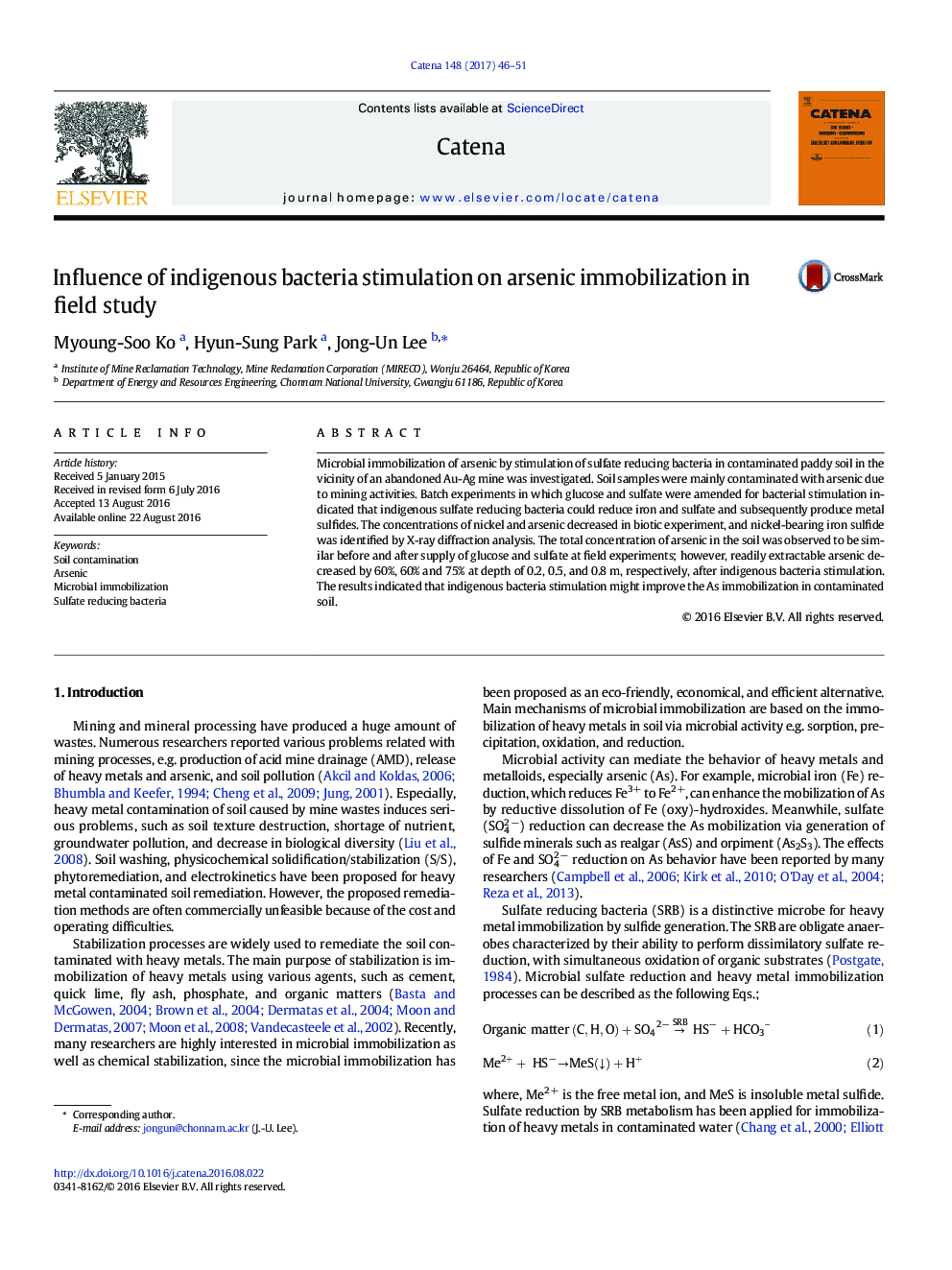| Article ID | Journal | Published Year | Pages | File Type |
|---|---|---|---|---|
| 4570812 | CATENA | 2017 | 6 Pages |
•Arsenic immobilization in soil by sulfate reducing bacteria was investigated.•Batch experiments showed microbial production of metal sulfides.•Readily extractable phase of arsenic decreased by 75% after biostimulation in field.•Indigenous bacteria stimulation may lead to As immobilization in contaminated soil.
Microbial immobilization of arsenic by stimulation of sulfate reducing bacteria in contaminated paddy soil in the vicinity of an abandoned Au-Ag mine was investigated. Soil samples were mainly contaminated with arsenic due to mining activities. Batch experiments in which glucose and sulfate were amended for bacterial stimulation indicated that indigenous sulfate reducing bacteria could reduce iron and sulfate and subsequently produce metal sulfides. The concentrations of nickel and arsenic decreased in biotic experiment, and nickel-bearing iron sulfide was identified by X-ray diffraction analysis. The total concentration of arsenic in the soil was observed to be similar before and after supply of glucose and sulfate at field experiments; however, readily extractable arsenic decreased by 60%, 60% and 75% at depth of 0.2, 0.5, and 0.8 m, respectively, after indigenous bacteria stimulation. The results indicated that indigenous bacteria stimulation might improve the As immobilization in contaminated soil.
